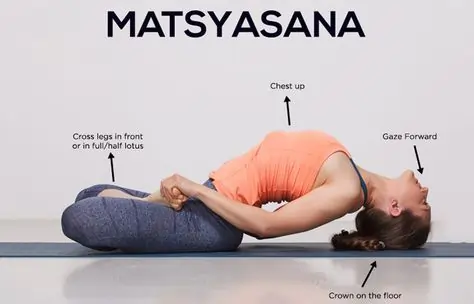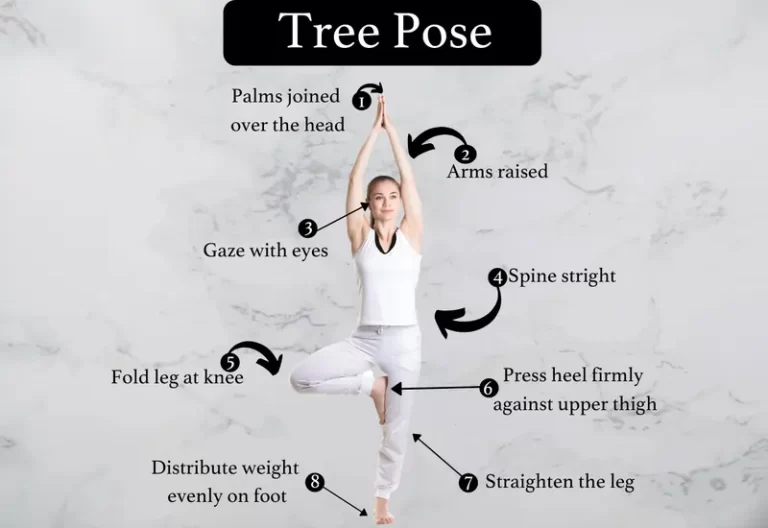Master Hanumanasana (Monkey Pose)
Hanumanasana (Monkey Pose) is a deep yoga stretch that mimics a front split, targeting the hamstrings, hip flexors, and quadriceps. It improves flexibility, balance, and strengthens the lower body while enhancing hip mobility.
Yoga is more than just a way to get healthier; it’s an aspect of life. It helps someone connect with their inner self and broadens their perspective on faith and new possibilities.
There is something special about each yoga pose you do, and it has nothing to do with the health advantages. For instance, consider Hanumanasana. This yoga stance, often referred to as the Monkey Pose, is named after the Hindu god Hanuman and his legendary leap. Although it is challenging, the Hanumanasana stance offers numerous mental and physical benefits once you have mastered it.
Table of Contents
Introduction
Hanamansana is a combination of the Hindu god of the identical name, Hanuman, and the term asana, indicating a position. In Hindi, it’s called Hanumanasana, but in English, it’s called the Monkey Pose.
A specialist teaching Hanumanasana will frequently share with you the biography of the Hindu god Hanuman and the tale that is thought to have inspired this pose.
It is regarded as one of the most well-known yoga poses these days. However, Hanumanasana is not recommended for novices unless they are being supervised by an expert, as it demands a lot of strength and flexibility. Additionally, some individuals alter it to make a beginner-friendly version of Monkey Pose.
It’s recommended to warm up properly and begin with preparatory postures like Baddha Konasana, Janu Sirsasana, and Paschimottanasana, even if you’re new to yoga. It assists in preparing the muscles for the strenuous stretches of the yoga stance Hanumanasana.
You will experience the benefits of Hanumanasana once you have mastered Monkey Pose yoga, as you will notice improved posture and increased flexibility.
Hanumanasana Yoga Video
Hanumanasana Yoga: Step-By-Step Instructions
If Monkey Pose is on your preferred list of yoga positions, it is important to keep to these guidelines:
- Keep them somewhat apart when kneeling on the ground. Make sure your toes are pointing up.
- Following that, turn your left knee back and raise the inner sole when the sides are facing up and your toes are parallel to the floor. To enter a split posture, slide
- It’s crucial to follow these rules if Monkey Pose is one of your most popular yoga poses.
- Bend them slightly back and stretch them.
- The traditional Hanumanasana yoga is this one.
- After a few seconds, return the arms to their original position.
- Alternate the legs to repeat after releasing the posture.
Variations:
Whenever you are a beginner to yoga, the Monkey Pose can be difficult to begin with. Instead, we advise you to attempt the beginner-friendly versions of Monkey Pose listed below:
- Upavistha Hanumanasana
- Ardha Hanumanasana
The Monkey posture Forward Bend, on the other hand, should be more challenging. It requires you to bend your entire torso forward, balance your body in the separated position, and use your hands to touch your feet. Experts in yoga can use this.
Hanumanasana Benefits
It’s time to learn about its advantages now that you’ve read how to do it. The following are some of the top advantages of monkey pose that you should be aware of:
An Excellent Stretch for the Body
Numerous muscle groups, including the arms, back, hamstrings, groin, hip flexors, and core muscles, can be stretched with it.
Increases Adaptability
It might increase the flexibility of your body, which can help you perform better in sports. This lessens the possibility of back and leg problems as well.
Enhances Muscle Strength
Additionally, money poses can increase endurance and muscle strength, particularly when performed frequently.
Increases Stability in the Body
You have to stabilize your entire body on the pelvis when in a divided stance, which is why this yoga can help you become more stable and correct your body.
Enhances the Functions of Abdominal Organs
Regular Monkey Pose yoga practice can help enhance reproductive organ function and digestion.
minimizes Stress
Improved mental health is another advantage of the monkey pose. Furthermore, it can help with relaxation and stress reduction.
Precautions
To guarantee that you execute Hanumanasana safely, bear in mind the following advice and safety measures:
- If you are not a specialist, always practice this position under the guidance of an expert.
- Warm-up positions such as Standing Forward Bend, Firelog Pose, Bridge Pose, and Downward Facing Dog should be performed during every session.
- If you have hamstring or groin injuries, stay away from Hanumanasana.
- You risk hurting yourself if you hurry through the steps.
- Always dress comfortably to prevent pain and facilitate your body’s natural motions.
- Avoid eating large meals for at least forty minutes before doing yoga.
- Avoid doing this pose when practicing basic yoga. Try the above variants under the guidance of an expert if you still want to perform Hanumanasana for beginners.
Conclusion
It’s a good idea to include Hanumanasana in your at-home workouts, but mastering this posture will require a lot of time and professional assistance. Therefore, take your time and begin with small measures.
Try taking yoga lessons online if you can’t go to the gym. These days, you can stay at home and study with leading yoga instructors. Simply register to begin your yoga classes!
FAQs
What advantages does the monkey pose offer?
Monkey Pose, or Hanumanasana, has several mental and physical advantages, but its main goal is to strengthen and stretch the hip and leg muscles.
Which muscles are used in Hanumanasana?
It stretches the inner groin, glutes, hip flexors, and hamstrings. It helps the hips move more freely and aids in mobility in daily tasks, counteracting tight hips and the effects of prolonged sitting.
What conditions make Hanumanasana contraindicated?
It can be harmful to force yourself into a full split. Keep your attention on the hip muscles, and if you experience any pain, lessen the stretch.
What are the two advantages of using the wall for a monkey pose?
This stance represents trust, strength, flexibility, and great prowess. Here’s how to practice the monkey pose and some important advantages of hanumanasana.
What is the monkey’s motion?
Monkeys, gibbons, and orangutans walk by swinging their arms between each support while hanging beneath branches. We refer to this as brachiation. Since our skeletons are designed to allow us to reach for supports in a variety of directions, brachiation is primarily an adaptation found in humans and apes.
References
- Yoga Journal. (2025, March 27). Monkey pose. https://www.yogajournal.com/poses/monkey-pose/
- Potdar, S., & Potdar, S. (2024, August 22). Hanumanasana | Monkey Pose | How to do | Benefits – The Art of Living. The Art of Living – Making Life A Celebration. https://www.artofliving.org/in-en/yoga/yoga-poses/hanumanasana-monkey-pose
- BipinJi. (2025, June 6). 7 steps to Mastering Hanumanasana, Full front Splits | Gyan Yog Breath. Gyan Yog Breath. https://gyanyogbreath.com/7-steps-to-mastering-hanumanasana/
- Fit, C. (2022, July 7). Hanumanasana: How to Do Monkey Pose Its Benefits & Variations. blog.cult.fit. https://blog.cult.fit/articles/hanumanasana-monkey-pose-benefits-variations
- Admin. (2025, July 9). Hanumanasana – how to master the pose with 200-Hour yoga teacher training in Rishikesh. Omkar Aham Yoga Mandiram. https://yogateachertrainingschool.com/blog/hanumanasana-pose/






